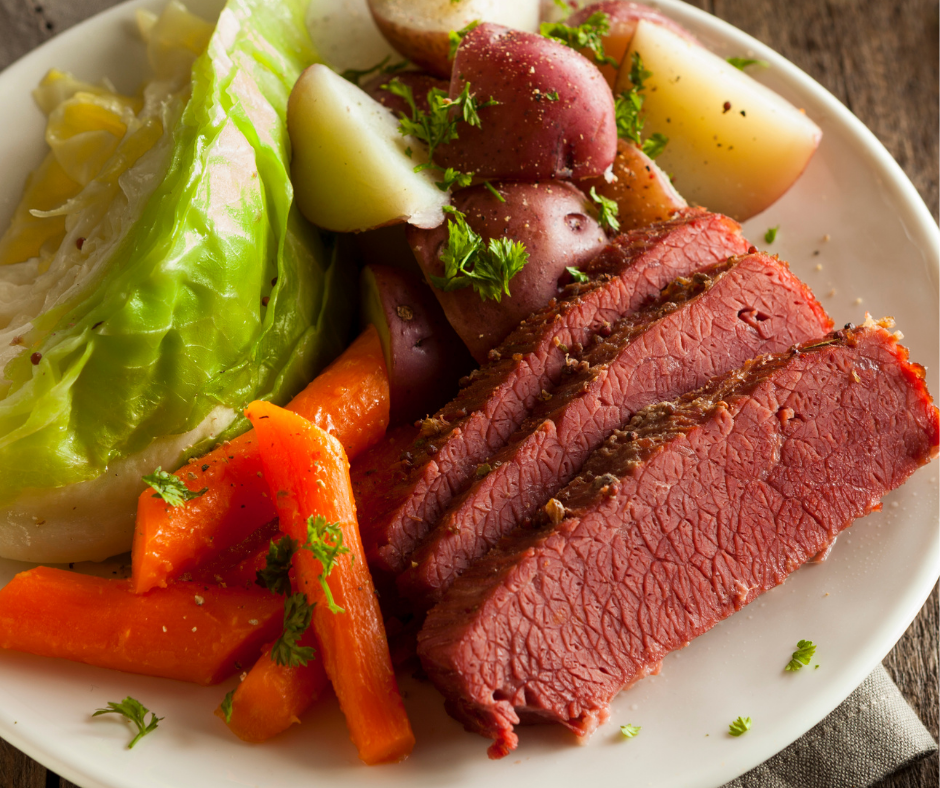


New England-Style Corned Beef and Cabbage
Serves 8 to10
A Note from the Chef: I suppose I should first mention the beef itself. Brisket is a very large meat area, one of eight "Primal Beef Cuts". There are eight initial cuts made when the steer begins the butchering process. These cuts are then separated into "Sub-Primal Cuts", like steaks and roasts.
The brisket is located on the lower chest of the steer, with large amounts of connective tissue. This requires it being cooked for a long time and very low temperatures. Otherwise, it would come out tough and stringy.
There are two sub-primal cuts to the brisket, the FLAT and the POINT. The flat is leaner and uniform in appearance. I see it most often in supermarkets. The point is thicker with more connective tissue and marbling. It's my preferred cut.
If you prefer a leaner piece of meat, feel free to use the flat cut. Leave a bit of fat attached for flavor. (You can trim it after you cook it.) The meat is cooked fully when it is tender, the muscle fibers have loosened visibly, and a knife slides into it with minimal resistance.
I like to serve mine with horseradish mixed with a little sour cream, or better yet, a thick, grainy mustard.
This recipe is one in which you home-corn your beef instead of buying one that is already done for you.
I am not one to decide what vegetables you want with your corned beef. Instead, I have compiled two lists for you. One is for slower-cooking vegetables and the other, faster-cooking veggies. Combine them however you choose.
INGREDIENTS
SLOWER-COOKING VEGETABLES
Carrots, peeled and halved crosswise, thin end halved lengthwise, thick end halved lengthwise
Rutabagas (small) peeled and halved crosswise, each cut in half into 6 chunks
Turnips, peeled and quartered
Red Potatoes(small) scrubbed, whole
FASTER-COOKING VEGETABLES
Green Cabbage (1 small head) uncored and cut into 6-8 wedges
Parsnips peeled and halved, thick end quartered lengthwise
Brussels Sprouts, trimmed
METHOD